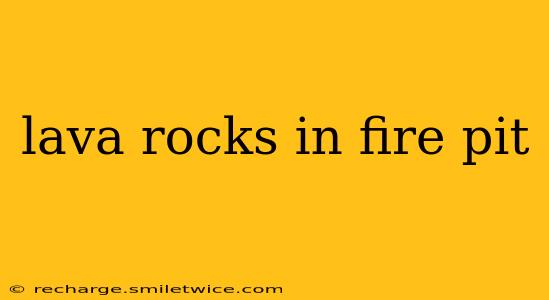Lava rocks, with their rugged texture and dark, volcanic hues, are a popular choice for fire pit landscaping. Their heat resistance and attractive appearance make them a seemingly ideal addition to any outdoor fire feature. But are lava rocks actually the best option for your fire pit? Let's delve into the pros, cons, and everything you need to know before using lava rocks in your fire pit.
Why People Use Lava Rocks in Fire Pits
Lava rocks are frequently chosen for fire pits because of several key advantages:
- Heat Resistance: Their volcanic origins mean they can withstand incredibly high temperatures without cracking or shattering. This is crucial for a fire pit application.
- Aesthetics: The dark, natural colors and rough texture of lava rocks add a rustic and visually appealing element to any outdoor space. They complement various landscaping styles.
- Cost-Effectiveness: Generally, lava rocks are a relatively inexpensive option compared to other fire pit materials.
- Availability: They are readily available at most home improvement stores and landscaping supply centers.
Are Lava Rocks Safe for Fire Pits?
While lava rocks are heat-resistant, safety concerns still exist. The primary concern is the potential for thermal shock. If very cold lava rocks are suddenly exposed to intense heat, they can crack. However, this is less likely to happen with gradually increasing heat. More importantly, it is crucial to remember that lava rocks can retain heat for a considerable time after the fire is extinguished. This poses a risk of burns if accidentally touched. Always use caution and ensure the rocks have completely cooled before handling them.
What are the Disadvantages of Using Lava Rocks in a Fire Pit?
Despite their popularity, lava rocks also have some drawbacks:
- Heat Retention: While a benefit in terms of keeping the fire going, the long-lasting heat can be dangerous. Always exercise extreme caution.
- Porous Nature: Lava rocks are porous, meaning they can absorb moisture. This can lead to spalling (chipping or flaking) over time, especially if exposed to frequent temperature changes.
- Potential for Cracking: Although heat-resistant, sudden temperature fluctuations, as mentioned above, can still cause cracks.
- Not Ideal for all Fire Pit Types: Lava rocks might not be suitable for every fire pit design, particularly those with tight spaces or intricate structures.
What are some alternatives to lava rocks for fire pits?
There are many alternatives available, each with its own advantages and disadvantages:
- Glass Fire Pit Rocks: These are designed specifically for fire pits and come in a variety of colors and shapes. They are typically non-porous and do not retain heat as much as lava rocks.
- River Rocks: Smooth, rounded river rocks offer a different aesthetic and are generally easier to handle. They also don't retain heat as much.
- Ceramic Fire Logs: For a cleaner burn and less mess, these are a good option, though they don't offer the same natural look.
How do I clean lava rocks for a fire pit?
Cleaning lava rocks is relatively straightforward. Once the rocks are completely cool, use a stiff brush or broom to remove ash and debris. You can also hose them down to remove any stubborn residue. Avoid using harsh chemicals, as these could damage the rocks.
How long do lava rocks last in a fire pit?
The lifespan of lava rocks in a fire pit depends on several factors, including the frequency of use, the intensity of the heat, and the quality of the rocks. With proper care, they can last for many years, but expect some level of wear and tear over time.
Conclusion
Lava rocks can be a visually appealing and cost-effective option for fire pits. However, their heat retention and porous nature require careful consideration. Understanding the potential risks and considering alternatives will help you make an informed decision that best suits your needs and ensures the safety of yourself and others. Always prioritize safety when using any type of fire pit material.
